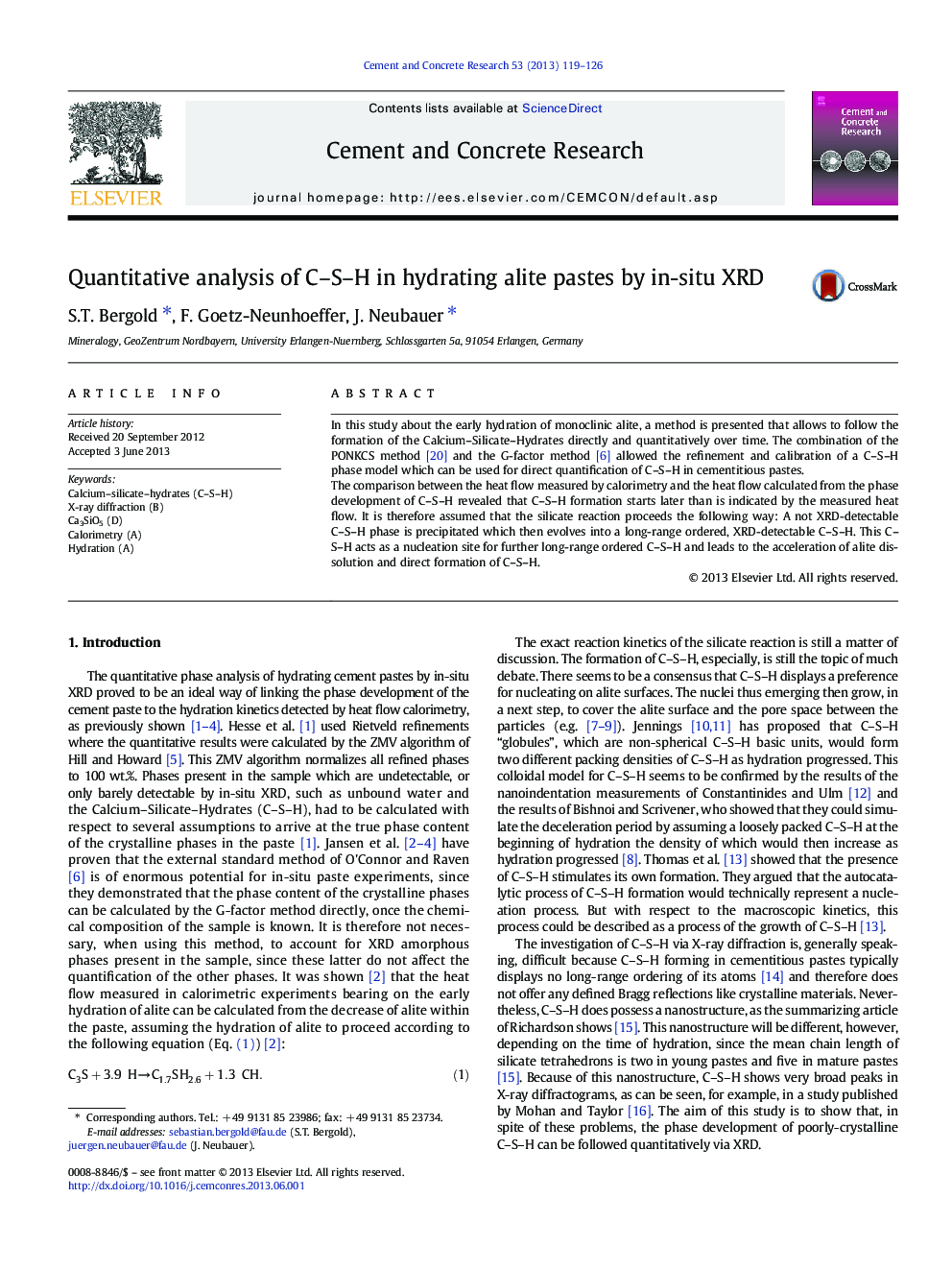| Article ID | Journal | Published Year | Pages | File Type |
|---|---|---|---|---|
| 1456417 | Cement and Concrete Research | 2013 | 8 Pages |
•A combined G-factor–PONCKS approach for the C–S–H phase is presented.•XRD is a suitable tool for quantitative determination of C–S–H.•C–S–H changes structurally from short range order to long range order within 16 h.•Short range ordered intermediate phase is transformed completely within 24 h.•Crystallite sizes of long range ordered C–S–H do not increase during 48 h.
In this study about the early hydration of monoclinic alite, a method is presented that allows to follow the formation of the Calcium–Silicate–Hydrates directly and quantitatively over time. The combination of the PONKCS method [20] and the G-factor method [6] allowed the refinement and calibration of a C–S–H phase model which can be used for direct quantification of C–S–H in cementitious pastes.The comparison between the heat flow measured by calorimetry and the heat flow calculated from the phase development of C–S–H revealed that C–S–H formation starts later than is indicated by the measured heat flow. It is therefore assumed that the silicate reaction proceeds the following way: A not XRD-detectable C–S–H phase is precipitated which then evolves into a long-range ordered, XRD-detectable C–S–H. This C–S–H acts as a nucleation site for further long-range ordered C–S–H and leads to the acceleration of alite dissolution and direct formation of C–S–H.
